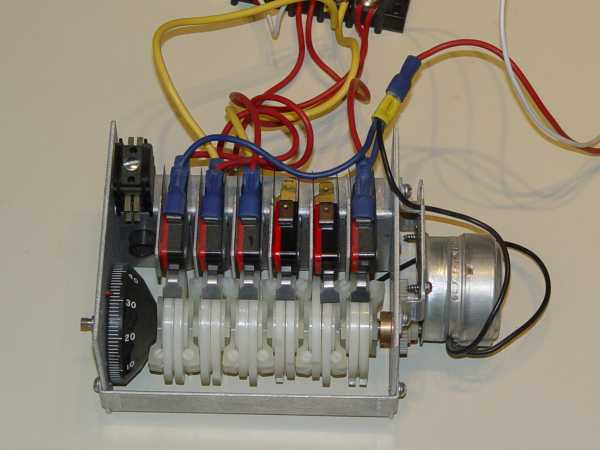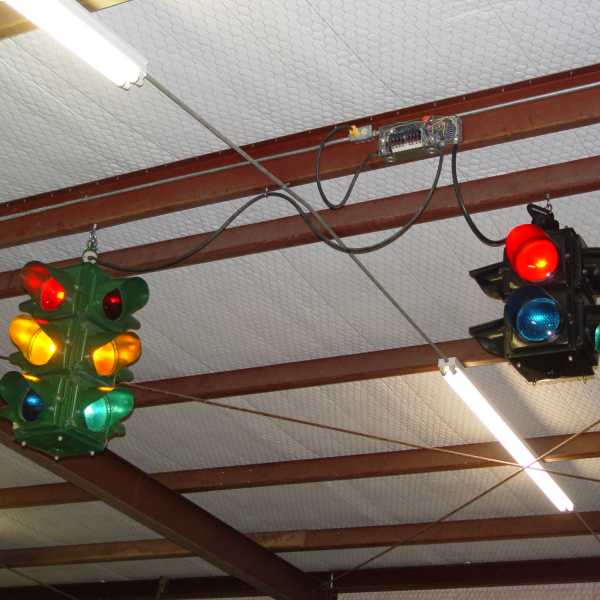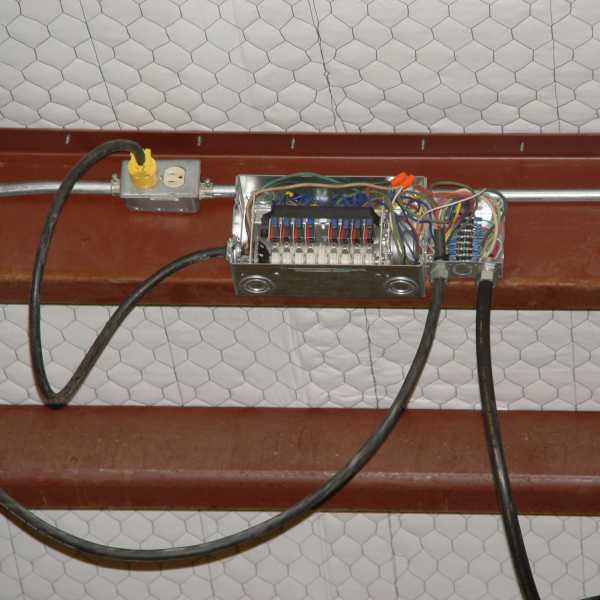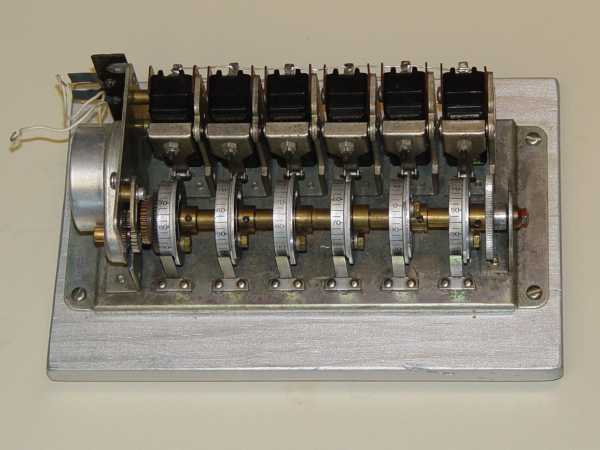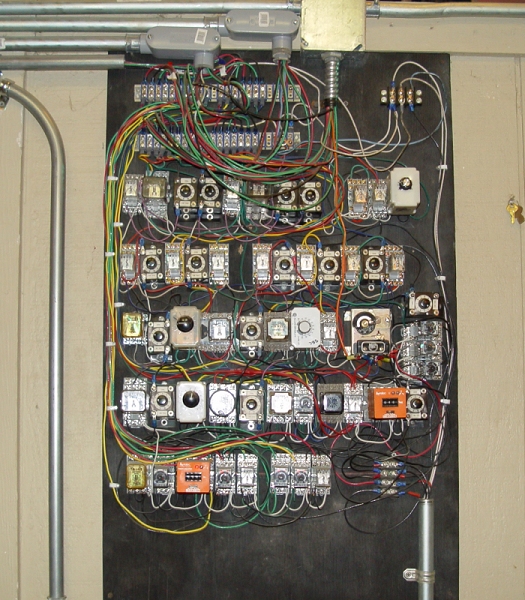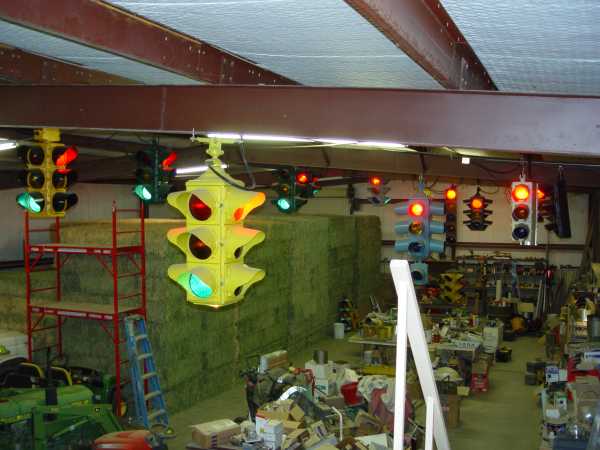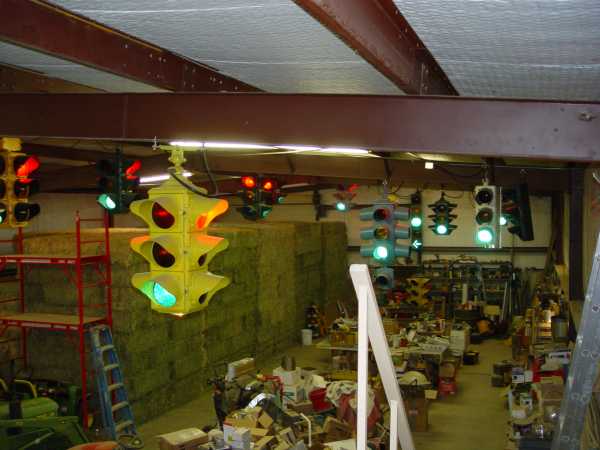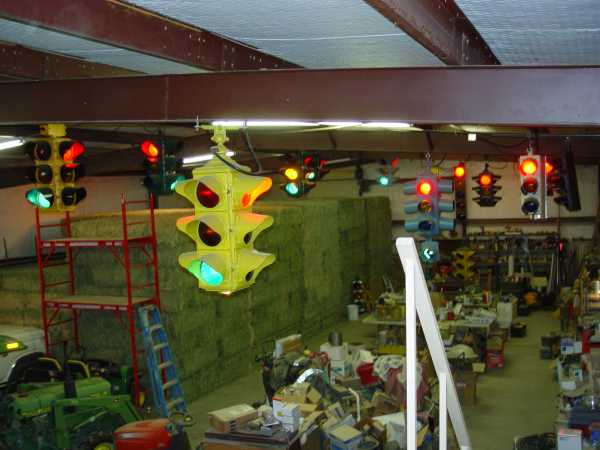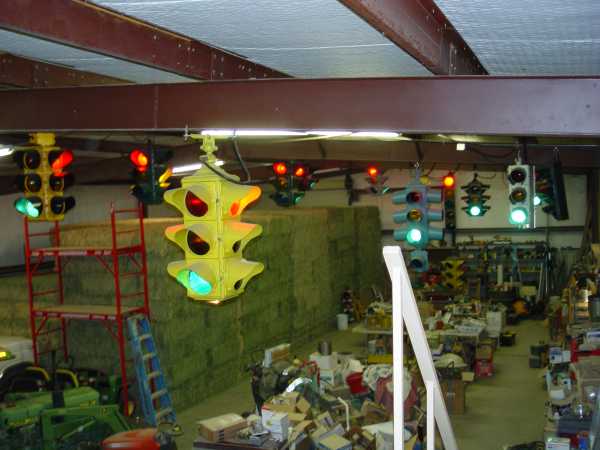Willis Lamm's
|
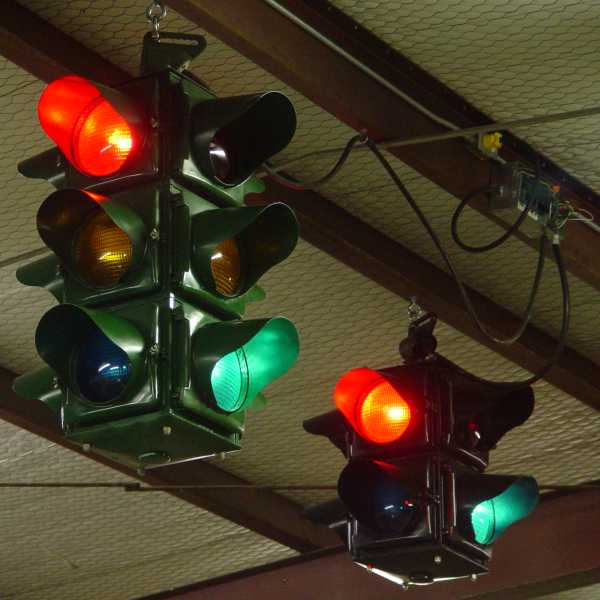
|
Click any picture to open up a larger view in a new window.
| Cam Type Controllers |
One cam timer operating two signals
|
Closeup View. (Boxes uncovered for photo.)
|
| Relay Logic Controllers |
|
If an intersection falls out of synch (such as a railroad preempt holding up a signal,) that particular intersection will limit cross traffic to "minimum green time" until that intersection is once again fully in synch with the previous intersection.
Here's what the progression looks like. From the angle of the photos, the coordinated signals run back and to the right of the GE 4-way in the foreground. |
GE intersection turns green.
|
C-H intersection permits left turn.
|
|
View a video of the green wave on YouTube.
A detailed illustration of real on-the-street electromechanical controllers as well as central computer signal controls in Toronto can be viewed in a production by Acme School on YouTube.
View Individual Signal SequencesReturn to Signals Page |
